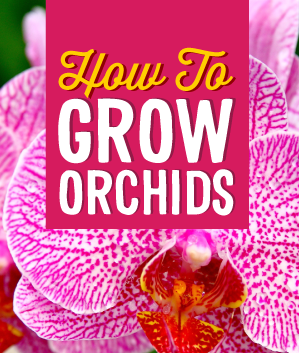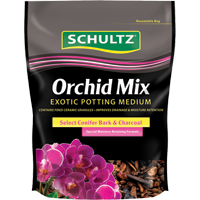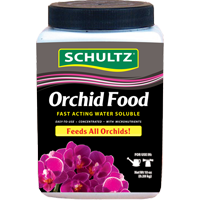
With well over 20,000 different varieties, orchids are an extremely diverse and popular flower with colorful and fragrant blooms. Orchids have a reputation for being difficult to grow, but in fact many varieties make excellent house plants. Follow these helpful tips for beautiful orchids that will bloom for months each year.
Lighting. Like other blooming plants, orchids require abundant, bright, but filtered light. A southern exposure is usually best in an east-facing window or can be grown under artificial lights.
Watering. Check the potting material’s moisture content with your finger. If it feels moist and cool, don’t water. If it feels dry and warm, water thoroughly by soaking pot in room temperature water for 10 minutes. Allow water to drain thoroughly. For best results, use water with low mineral content. Normal watering is about once a week. DO NOT overwater or let sit in waterlogged soil.
Fertilizing. Generally, the faster an orchid grows, the more food and water they need. Most orchids are slow growers so be patient and give them proper care. Avoid overfertilizing and over watering. For best results, use a water-soluble plant food specially formulated for orchids. This way you are feeding every time you water.
Growing Media. Most orchid types are epiphytes, meaning they grow best in mixtures without soil. Keep in mind that a few orchids, including Paphiopedilum and Cymbidium, need to be planted in a soil mixture for nourishment.
Temperature. Consider your home climate carefully, then choose orchids that will thrive in those conditions. Orchid types fall into three general categories:
• Cool growers (60 - 70°F days / 50 - 55°F nights)
• Medium growers (65 - 75°F days / 55 - 60°F nights)
• Warm growers (70 - 85°F days / 60 - 65°F nights)
Humidity. Most orchids require humidity levels of 40-60% year-round. In low-humidity conditions, mist leaves daily. As an alternative, fill a tray with pebbles or gravel and only enough water so the pot, resting on the gravel, will not absorb water through the drain hole. In stagnant air conditions, position a fan so that it circulates the air without blowing directly on the orchid.
Insects. At first sign of infestation use insect spay. Early morning application is best.
Repotting. Orchids typically need to be repotted once a year; be sure to use the proper growing media. The best time to repot your orchid is soon after flowering or just after new growth appears. It’s time to repot your orchid when you see:
• Yellowing foliage
• Poor moisture retention or drainage
• Rotting or matted roots
• Poor growth or blooming











